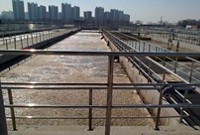Advertisement
Grab your lab coat. Let's get started
Welcome!
Welcome!
Create an account below to get 6 C&EN articles per month, receive newsletters and more - all free.
It seems this is your first time logging in online. Please enter the following information to continue.
As an ACS member you automatically get access to this site. All we need is few more details to create your reading experience.
Not you? Sign in with a different account.
Not you? Sign in with a different account.
ERROR 1
ERROR 1
ERROR 2
ERROR 2
ERROR 2
ERROR 2
ERROR 2
Password and Confirm password must match.
If you have an ACS member number, please enter it here so we can link this account to your membership. (optional)
ERROR 2
ACS values your privacy. By submitting your information, you are gaining access to C&EN and subscribing to our weekly newsletter. We use the information you provide to make your reading experience better, and we will never sell your data to third party members.
Biological Chemistry
Dirt Tells Resistance Tales
Environmental Chemistry: Antibiotic resistance genes in soil are increasing
by Carmen Drahl
January 4, 2010
| A version of this story appeared in
Volume 88, Issue 1

Despite measures aimed at curbing antibiotic resistance, a study in Europe suggests that resistance might still be on the rise in the environment (Environ. Sci. Technol., DOI: 10.1021/es901221x). The work provides data spanning nearly 70 years, and it complements public health data from patients.
For years, studies have shown that antibiotic resistance is up at hospitals, apparently due to clinical use of antibiotics. But antibiotics are also used in agriculture to increase productivity and prevent disease in livestock. In theory, excessive use of antibiotics could expand reservoirs of resistance in soil microbes. Antibiotic resistance genes naturally exist in soil and sewage microbes, but no long-term studies have been performed to gauge how resistance might have changed since the 1940s, when antibiotic mass production kicked in.
Now, environmental engineer David W. Graham of Newcastle University, in England; molecular ecologist Charles W. Knapp, now at the University of Strathclyde, in Scotland; and colleagues have found a way to delve into that past. “We thought that by extracting DNA from soil archives, we might be able to learn something about the longer term history,” he says. In collaboration with TAGA, a soil archive maintained by research institute Alterra at Wageningen University, in the Netherlands, the team quantified antibiotic resistance genes for five sets of soil samples from across the Netherlands, with one set dating back to 1940.
For every drug class the team examined, levels of resistance genes have significantly increased since 1940. In particular, genes that confer resistance to tetracycline antibiotics have spiked in recent decades, becoming 15 times more abundant than in the 1970s.
The work suggests that resistance research should be broadened to include environmental reservoirs so that resistance can be more efficiently mitigated in the future, Graham says. This study was relatively local, he notes, but “we suspect similar patterns also are occurring in soils from other locations around the world.”
“In retrospect, we should have anticipated the environmental outcome that this study documents,” says Shahriar Mobashery, who studies antibiotic resistance at the University of Notre Dame.




Join the conversation
Contact the reporter
Submit a Letter to the Editor for publication
Engage with us on Twitter